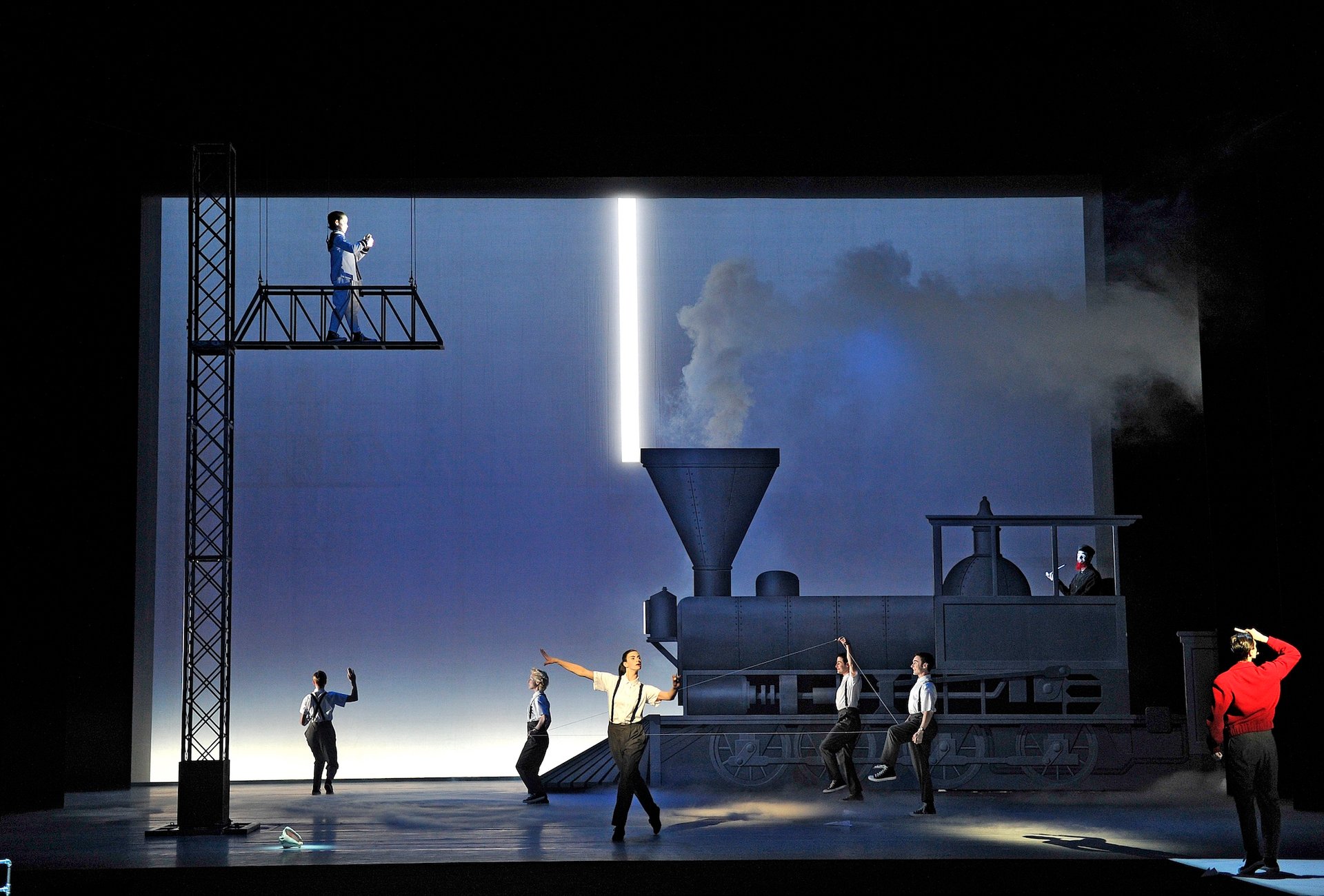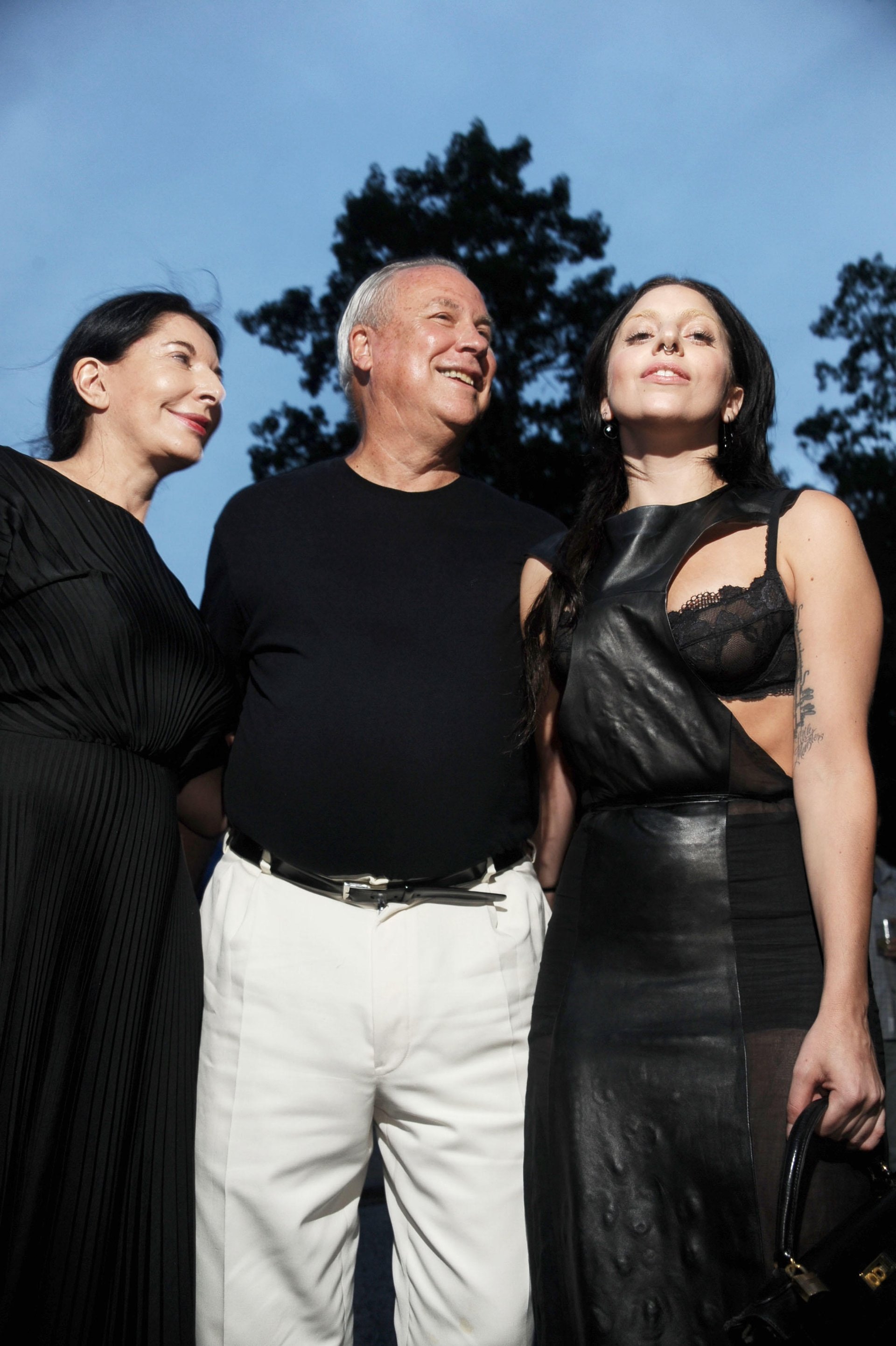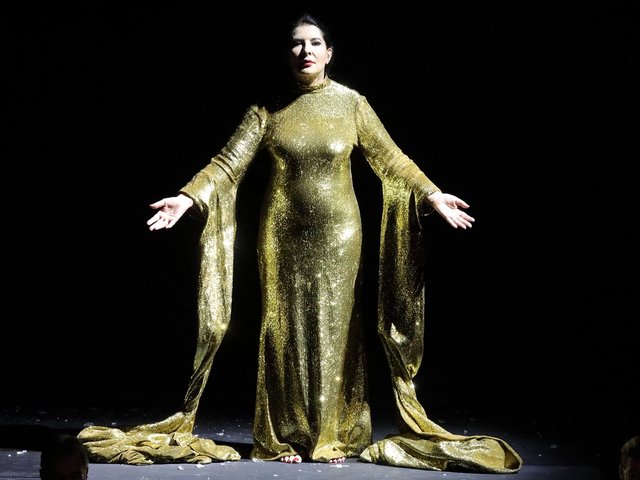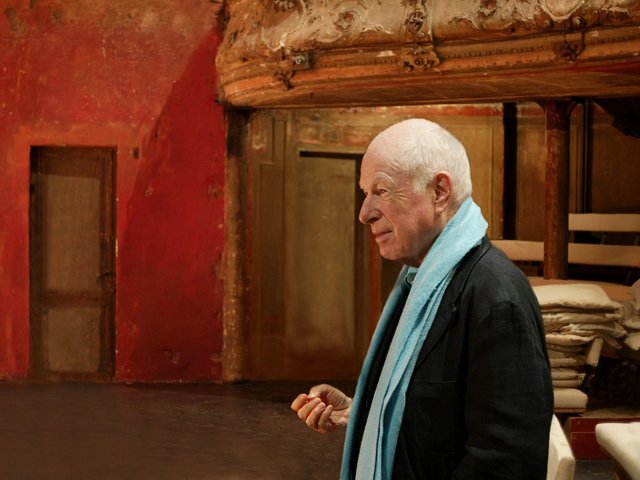Robert Wilson, a visionary artist best known for his highly visual and stylised approach to theatrical performances, has died, aged 83. According to a statement released by the Watermill Center, the arts organisation he founded in Water Mill, New York, Wilson died at his home there on Thursday (31 July) following “a brief but acute illness”.
“While facing his diagnosis with clear eyes and determination, he still felt compelled to keep working and creating right up until the very end,” the statement notes. “His works for the stage, on paper, sculptures and video portraits, as well as The Watermill Center, will endure as Robert Wilson’s artistic legacy.”
Wilson was one of the most critically distinguished and distinctive directors and playwrights of the past half-century. His original productions—including the “silent opera” Deafman Glance (1970) and his canonic, epic collaboration with the composer Philip Glass, Einstein on the Beach (1976)—are in frequent production at theatres, opera houses and festivals around the world. As are his adaptations of classical works by Bertolt Brecht, William Shakespeare, Samuel Beckett, Virginia Woolf and others.
His works for the stage were known for a stylised dramaturgy that rejected naturalism. They drew on a wide range of musical collaborators from Glass to Tom Waits and Lou Reed, as well as performance modes drawn from silent film, mime and more. Their bold visual aesthetic typically involved sleek, minimalist stages and imaginative uses of lighting and projection.
“I very often stage a work—whether it’s The Ring of Wagner or Hamlet—visually first, and then later I add text,” he told The Guardian in 2022. “The visual book is as important as the audio.”

A scene from a 2012 staging of Robert Wilson and Philip Glass's Einstein on the Beach (1976) Photo © Lucie Jansch
Some of Wilson’s stage projects are also known for their incredibly long durations; Einstein on the Beach stretches to nearly five hours, and attendees are encouraged to come and go at their leisure throughout the performance. However, it is positively concise compared to KA MOUNTAIN AND GUARDenia TERRACE (1972), which was staged on a mountain in Iran over the course of seven days.
Wilson was also a prolific visual artist, creating drawings, sculptures and other objects to inform and accompany his stage productions; these were the subject of an exhibition at SFMoMA in 1991. He has had solo exhibitions or created installations at institutions around the world including the Museum of Fine Arts, Boston; Centre Pompidou in Paris; the Vitra Design Museum in Weil, Germany; the Minneapolis Institute of Art, Mudac Lausanne and many more. He created the exhibition design for the blockbuster Giorgio Armani retrospective that opened at the Solomon R. Guggenheim in New York in 2000 and subsequently travelled for seven years throughout Europe and Asia.
In the 2010s he began creating his Video Portraits series, which debuted with an exhibition at the Musée du Louvre in 2013. The work features portraits of Lady Gaga in the style of famous paintings, including Jacques-Louis David’s The Death of Marat (1793) and Jean-Auguste-Dominique Ingres’s Mademoiselle Caroline Rivière (1793-1807). Those videos were shown alongside an installation of around 700 works from Wilson’s personal collection. Subsequent works in the Video Portraits series include portraits of the artists Pope.L and Zhang Huan, as well as the actors Isabella Rossellini, Brad Pitt and Winona Ryder.
In 2011, Wilson collaborated with the performance artist Marina Abramović on the semi-biographical stage production The Life and Death of Marina Abramović, which premiered at the Manchester International Festival and was subsequently produced at the Park Avenue Armory in New York. In 2010, during rehearsals for the show, Abramović told The Art Newspaper: “It’s about childhood and insane stories, almost like slapstick, which is refreshing. I am playing my mother, which is the worst fear I have in my life. I have had so many problems with my mother—it’s my pure nightmare come true!”

Robert Wilson with Marina Abramović (left) and Lady Gaga (right) at the 2013 Watermill Center Summer Benefit WENN / Alamy
Wilson was born in Waco, Texas, in 1941, and was raised in a very conservative, segregated setting. “I grew up in a community that was ultra conservative, right wing,” he said in 2014 interview with The Talks. “Full of religious fanatics, and Seventh Day Adventists, Southern Baptists, you know, it was a sin for women to wear pants, it was a sin to go to the theatre. It was a disgrace that Abraham Lincoln, the President of the United States, was assassinated in the theatre. The theatre was a house of ill repute.”
In an effort to cure him of a stammer, his parents sent him to study dance as a child with Byrd Hoffman. After dropping out of his business administration studies at the University of Texas in Austin, Wilson moved to Brooklyn and studied interior design and architecture at Pratt Institute, graduating with a BFA in 1965. Before the end of the decade he had assembled a group of performers—the Byrd Hoffman School of Byrds, in homage to his childhood dance instructor—and begun staging performances in New York City.
In 1992, he founded the Watermill Center, a visual and performing arts center on the South Fork of Long Island. Its annual benefit gala, often featuring performers in elaborate plein air stagings throughout its grounds, has long been a fixture of the Hamptons summer social calendar. Its most recent edition, held just five days before Wilson’s death, honoured Rossellini and the architect Francis Kéré.
From his studies at Pratt, throughout his projects for the stage and in his visual art, architecture was a consistent influence on Wilson’s work and way of thinking.
“I start with light. Light’s what creates the space,” Wilson, describing his process, told Autre Magazine earlier this year. “Very often people working in the theatre, they write a play, they write an opera. They cast it. They rehearse it. And two weeks before they open, they light it. Louis Kahn spoke when I first went to school to study architecture here in New York. He said, ‘Students, start with light.’ It had a profound influence on me.”




